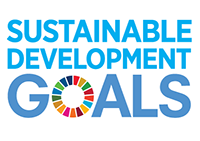Life Expectancy
Definition:
Life expectancy is the number of years a person would be expected to live, starting from birth
Methods and Limitations:
The calculation of life expectancy is based on three consecutive years of death data and population estimates.
Life expectancy is calculated according the methodology described in Methods for Constructing Life Tables for Canada, Provinces and Territories, catalogue no. 84-538. Life expectancy originates from complete life tables, by single years of age and sex, for Canada and for nine provinces: Newfoundland and Labrador, Nova Scotia, New Brunswick, Quebec, Ontario, Manitoba, Saskatchewan, Alberta and British Columbia. For Prince Edward Island, Yukon, the Northwest Territories, Nunavut and all health regions, abridged life tables were computed, that is by 5-year age groups and sex.
Rates used in this table for the calculation of life expectancy are calculated with data that exclude: births to mothers not resident in Canada; births to mothers resident in Canada, province or territory of residence unknown; deaths of non-residents of Canada; deaths of residents of Canada whose province or territory of residence was unknown; deaths for which age or sex of decedent was unknown.
Rates used for the calculation of life expectancy in this table are based on data tabulated by place of residence.
Due to improvements in methodology and timeliness, the duration of data collection has been shortened compared to previous years. As a result, there may have been fewer deaths captured by the time of the release. The 2017 data are therefore considered preliminary
Source:
Statistics Canada. Table 13-10-0389-01 Life expectancy, at birth and at age 65, by sex, three-year average, Canada, provinces, territories, health regions and peer groups

 Life Expectancy in the Sustainable Development Goals
Life Expectancy in the Sustainable Development Goals
Click on the SDG to reveal more information
3. Ensure healthy lives and promote well-being for all at all ages
Ensuring healthy lives and promoting the well-being for all at all ages is essential to sustainable development. Significant strides have been made in increasing life expectancy and reducing some of the common killers associated with child and maternal mortality. Major progress has been made on increasing access to clean water and sanitation, reducing malaria, tuberculosis, polio and the spread of HIV/AIDS. However, many more efforts are needed to fully eradicate a wide range of diseases and address many different persistent and emerging health issues.

